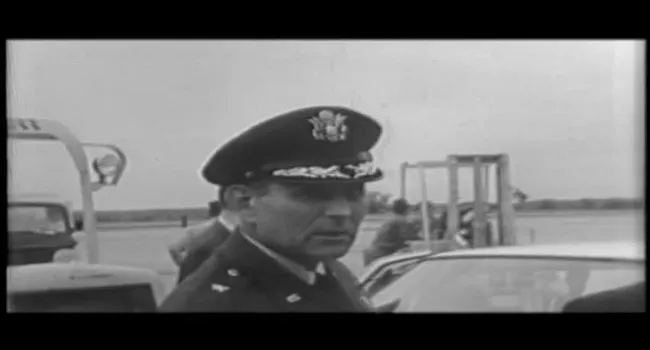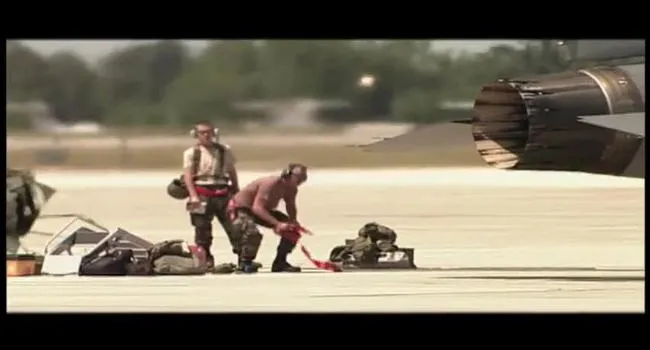In December 1990, Iraq became the new battleground. More than 700 members of the S.C. Air National Gaurd were deployed for Operation Desert Shield and Operation Desert Storm.
The 240th Combat Communications Squadron set up communications and air traffic control on the base in Saudi Arabia. Members of the 169th Fighter Group remained at home until a few days after Christmas. Most of the Air Guard men and women were experiencing combat for the first time. Major "Jet" Jernigan led the first bombing mission into Kuwait. Surface-to-air missiles struck at twice the speed of sound. Jernigan reflects on how relieved he was when all 20 of his F-16s responded when he gave the command to check in.
Master Sergeant Danny Sightler recalls that men and women on the ground needed 30 minutes to get into chem suits and gas masks when scud missilies were incoming, much longer than it seemed they had.
Colonel Keith Coln, Commander of the 169th Fighter Wing, recalls the main thing being the fear of the unknown.
Former Commander, Major General George Patrick, recalls the greatest fear not being for your personal safety, but rather, the fear of failing to perform your duties as expected. He said that intense pressure brings out the best and the worst in people.
When the conflict was suspended for a few years, the Swamp Foxes had flown nearly two thousand combat missions and had achieved a near 90 percent mission-capable rate, the highest of any flying unit in the entire theater of operations.
The Swamp Foxes were required to make several more trips to Southwest Asia in the 1990s, and were the first called upon for Operation Southern Watch at Al Udeid Air Base, near Qatar.
Within an hour after the attacks on September 11, 2001, the airplanes were readied for the busiest and most dynamic 5-year period in the history of the Guard. Five months after the attacks, the 169th sent six jets and 200 people again to Qatar, to fly combat missions over Afghanistan, as part of Operation Enduring Freedom.
Later that year, the 240th Combat Communinications Squadron was put to its biggest test since Desert Storm, in Kyrgyzstan on the China/Russia border..Lt. Col. Linda Keck recalls that time.
In late 2002, the 245th Air Traffic Control Squadron was deployed to Bagram Air Base, Afghanistan. Lt. Col. Jim Hartley recalls that the base still had a lot of mine fields, which they saw being blown up, while they flew aircraft in and out of there.
The 169th returned during Operation Iraqi Freedom. Col. Deane Penington, Vice Commander of the 169th Fighter Wing, who had been a new member of the 169th, a captain, during Desert Storm, recalls reassuring his men and women that they were trained well, were an outstanding organization and that they would do fine. Captain Tally Parham reflects on the first night of war, and said how integral McEntire was. Master Sergeant Troy Hammond reflects on that time. For most of the Swamp Foxes, Operation Iraqi Freedom was short and successful. For others, the operation continued.
Standards
- 5.5.CC Analyze the continuities and changes in U.S. relationships with countries around the world as a result of the economic, political, and social changes in this period.
- 8.5.E Utilize a variety of primary and secondary sources to analyze multiple perspectives on the cultural changes in South Carolina and the U.S.
- USHC.5.E Utilize primary and secondary sources to judge the impact of evolving American foreign policy on American identity and capitalism.





